Spinal diseases are becoming younger every year.One of the most common osteochondrosis residues, which was only recently considered an exclusively age -related disease.If it affects the cervical spine, quite severe pain in the neck, arms and head can occur, significantly reducing the quality of life.This is often accompanied by a number of other disorders and, if left untreated, leads to the formation of intervertebral hernias, large volumes of which require surgical intervention.Therefore, it is important to diagnose the cervical osteochondrosis as soon as possible and start treatment according to the situation.
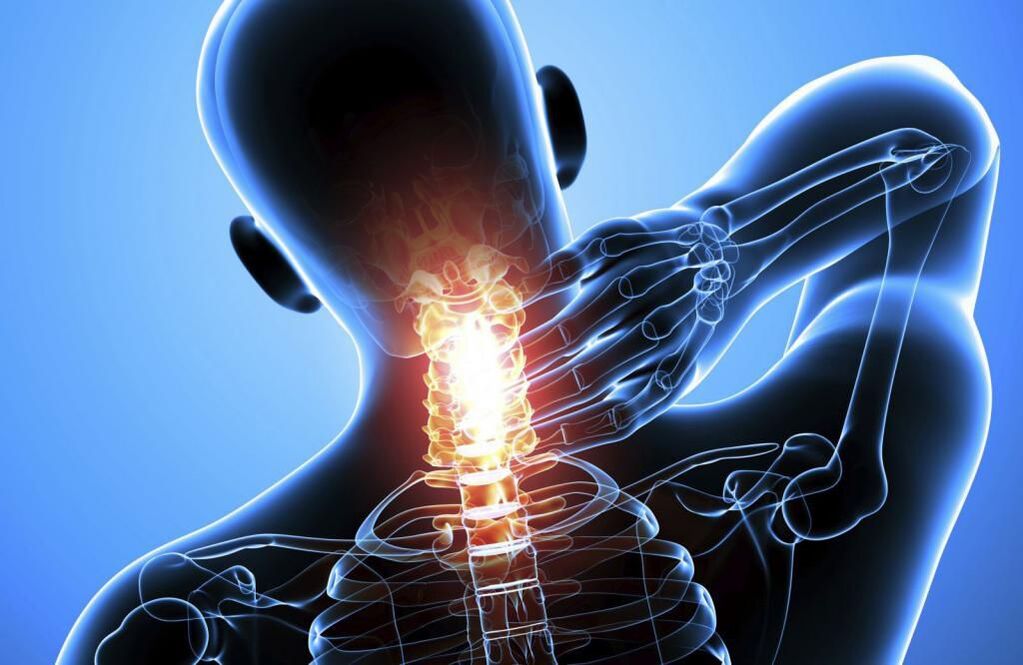
Symptoms of osteochondrosis of the cervical back
Cervical spine osteochondrosis is a disease in which degenerative changes occur in the intervertebral discs.Initially, the discs, which are cartilage rings that contain jelly -like content, are dehydrated.This is most often the result of a sedentary lifestyle, prolonged computer work, poor behavior, neck damage and a number of other factors.
This leads to a decrease in the force of the collagen fibers that form the cancer of the annulus fibrosus.As a result, its thickness gradually decreases, which becomes the main reason for the development of characteristic symptoms of cervical osteochondrosis:
- neck pain of different degrees of intensity;
- headaches, dizziness, loss of consciousness caused by violation of vertebral cervical arteries that directly pass through vertebrae, ie the development of vertebral artery syndrome;
- fluctuations at blood pressure level;
- Radicular syndrome, caused by pinching of the spinal roots, which is associated with radiation of neck pain to the arms, to the hands and fingers, in the head, shoulders, sensory disturbances in these areas, the appearance of goosebumps, numbness, etc.;
- a decrease in the range of neck movement, appearance or intensification of pain when performing certain movements;
- Increased fatigue, decreased performance;
- Tinitus, reducing visual acuity, developing ENT pathologies that are difficult to treat.
There are 7 beads on the cervical back.Most often, osteochondrosis affects the discs located between 5 and 6, as well as the 6th and 7th vertebrae.
In such situations, you should contact a neurologist who describes an MRI.The results of this examination make it possible to accurately identify osteochondrosis at any earliest stage of development, and choose treatment.
Stages of development
In general, there are 4 stages of osteochondrosis development:
- Grade 1 - Pathological changes have just begun to appear on the intervertebral disc, so the symptoms are mild and only occasionally observed.In such situations, treatment will be as effective and simple as possible.
- 2nd degree - changes in discs become more pronounced, which leads to the appearance of neck pain, which occurs and intensifies when performing head movements.
- Grade 3 - The pain becomes almost constant and can be complicated by the development of vertebral artery syndrome, as well as the formation of extension and intervertebral hernia.
- The 4th degree - the disk is destroyed so much that the possibility of movement in the affected spinal movement segment is almost completely excluded.In this case, severe pain is observed, radicular syndrome often develops, and one or both vertebral arteries are adjacent, which leads to the appearance of characteristic symptoms.
Treatment of cervical osteochondrosis
Thus, treatment tactics for cervical osteochondrosis depend on the severity of degenerative changes in the intervertebral discs, the patient's age and its individual characteristics.Therefore, it always develops separately for each patient, but always aims to solve the following problems:
- elimination of unpleasant symptoms that exacerbate the quality of life of the patient;
- improving the quality of blood circulation in the neck;
- improvement of metabolic processes in the affected area;
- Eliminate the causes of degenerative-district changes in the intervertebral discs;
- Reducing the risk of developing osteochondrosis complications, ie protrructions, intervertebral hernias, spondylosis, etc.
In general, at each stage of the development of the disease, the use of various therapeutic measures is indicated.If in phase 1 it will be enough to adjust your lifestyle and engage in exercise therapy, then in the 2nd phase will require a broader impact, including taking a number of medicines, performing manual therapy sessions, using orthopedic devices, etc.
But patients need to understand that it is impossible to achieve the reverse regression of degenerative-decidual changes that have already occurred, especially if Phase 2 or more osteochondrosis is diagnosed.In such situations, treatment will be aimed at improving the patient's well -being and stopping further progression of the disease.Sometimes it is possible to completely correct the situation in the 1st phase of osteochondrosis, but at this stage of development the pathology is extremely rarely diagnosed, as patients perceive minor discomfort in the neck only as a sign of fatigue and do not consult a physician.
In more severe cases, the treatment of osteochondrosis of the cervical spine will be even more complex and longer.In any case, it is performed under the supervision of a neurologist with the following periodic examinations and the regulation of therapy depending on the changes in the patient's well -being.
Lifestyle correction
All patients diagnosed with cervical osteochondrosis are advised to make certain changes in their lifestyle.In each case, these recommendations vary depending on the characteristics of the professional activity of the person and a number of others.
The vast majority is advised to increase their level of physical activity and take a break from work at least every hour to heat if involved sitting.In cases where the patient is actively involved in sports, it is recommended that he reduce the load on the cervical spine.Thus, it will be shown to give up running, jumping sports, lifting weights and wrestling.
People who are overweight are also recommended to take action to reduce it as well as adjust their diet.When osteochondrosis has already happened, it is important that the diet meets the daily needs of the body as fully as possible.Therefore, it is worth giving up fast food and semi -finished products and bringing your diet closer to rational.This means that it is worth creating a menu so that half of the diet consists of vegetables and fruits, and also contains a sufficient amount of protein.
Drug treatment of cervical osteochondrosis
Medication therapy is mainly aimed at eliminating the unpleasant symptoms of cervical osteochondrosis.As a rule, it is complex and involves the use of medicines from different groups, each of which solves specific problems.Therefore, it is also developed separately for each patient.
Nsaids
Josteroidal anti-inflammatory NSAIDs or NSAIDs are a wide group of medicines that have not only anti-inflammatory but also analgesic properties.They are available in various dosage forms, including tablets, capsules, ointments, gels and lotions, as well as solutions for intramuscular administration.NSAID should only be used on request, ie.when severe neck pain appears.
For severe pain, NSAIDs can be administered intramuscularly.
The disadvantage of oral medicines from the NSAID group is their irritating effect on the gastric mucosa and duodenum.This can provoke a deterioration of the flow of diseases of these organs, in particular gastritis and peptic ulcers.To reduce such risks, proton pump inhibitors are described in combination with them.
There are medicines that have a milder effect on the gastrointestinal tract, due to which they are widely prescribed to relieve pain and inflammation in osteochondrosis.Also, more advanced medicines are already developed, characterized by a selective effect, which are often prescribed for osteochondrosis, but they are more expensive and are not available to all patients.
Corticosteroids and injections (blockade)
Corticosteroids are hormone medicines prescribed for patients with severe inflammatory processes.They can cause a number of undesirable consequences with long -term use, so they are described in short courses in the most difficult cases.As a rule, the use of injection solutions is shown, as this method of administration these medicines are much easier to tolerate by the body and are less likely to cause side effects.
Corticosteroids are often used in combination with local anesthetics when performing blockages, that is, to relieve very severe pain by introducing the mixture prepared at special spots near the spinal nerve passage.The procedure requires certain skills and skills, and therefore can only be performed in medical institutions by specially trained medical workers.Otherwise, the possibility of developing undesirable consequences and complications is very high.
It is recommended to do blockages no more than 4 times a year.
Muscle relaxants
Muscle relaxants are a group of medicines used to eliminate reflex muscle spasms caused by an acute inflammatory process.This often occurs with cervical osteochondrosis and causes severe neck pain, which further exacerbates the situation.
Vitamin
Since osteochondrosis creates significant prerequisites for compression of spinal roots, it is often shown to obtain complex vitamins containing mainly vitamins B. They are directly involved in the transmission of nerve impulses, which is particularly important in the development of radicular syndrome.
Chondroprotectors
The chondroprotectors are medicines around which a lot of controversy is lit.They are based on the substances used by the body to restore damaged cartilage tissue, which determines indications for their use in cervical osteochondrosis.But at the same time, there is no convincing proof of their effectiveness in advanced forms of the disease.In the early stages of osteochondrosis, they actually have a positive effect on the condition of the intervertebral discs, which leads to an improvement in the patient's well -being.And in later stages, they can only help to prevent further progress of degenerative changes in the intervertebral discs.
Chondroprotectors are produced in the form of powders for the preparation of solutions, capsules, products for current use, as well as solutions for intramuscular administration.The biggest positive effect was seen by the latter.
Current products
These are the medicines, available in the form of a gel, cream or oil, that patients often begin to use when signs of cervical osteochondrosis appear.They have different effects, including anti-inflammatory, analgesic, heating or, conversely, cooling and local irritants.
Often these products contain NSAIDs, so they help reduce pain, but are mainly effective in the early stages of osteochondrosis.Also, the ingredients of such medicines can be menthol, hot pepper extract, snake or bee poison.
Local irritants act on the principle of irritation of the nerve endings of the skin, due to which there is a decrease in the severity of pain and increased blood flow in the area of application.But such remedies are effective only in the early stages of the development of cervical osteochondrosis.
Preparations to improve microcirculation
Drugs in this group are used to improve the quality of blood circulation, which is especially necessary for vertebral artery syndrome.A number of medicines have a vasodilating effect, which improves brain nutrition and helps eliminate tinnitus, headaches and dizziness.But without effectively eliminating the factor by pressuring the vertebral arteries, such treatment will only provide temporary results.
Exercise therapy
Physical therapy is the basis for the treatment of cervical back osteochondrosis.Today, there are many different property and generally accepted methods of exercising therapy for cervical osteochondrosis, but patients need to understand that there are no universal exercises.A set of exercises should be chosen by an individual specialist, taking into account not only the stage of developing degenerative-degenerative changes, but also the age of the patient, the nature of existing accompanying diseases, the presence of radical syndrome or compression of vertebral arteries.Therefore, various exercises can be indicated for the same patients with approximately the same changes in the intervertebral discs.
In general, physical therapy has the following goals:
- strengthening of the neck muscles and upper shoulder band;
- activation of blood circulation in the affected area, which will contribute to the restoration of fibrous rings of the intervertebral discs;
- Normalization of muscle tone.
It is necessary to do exercise therapy daily.At first, it is best to participate in special groups or work with an exercise therapy instructor individually.This will allow you to master 100% technique of performing any proposed exercise in order for its implementation to bring maximum benefit.The specialist will help you choose the optimal load and develop a program for its growth, taking into account the patient's physical development level.
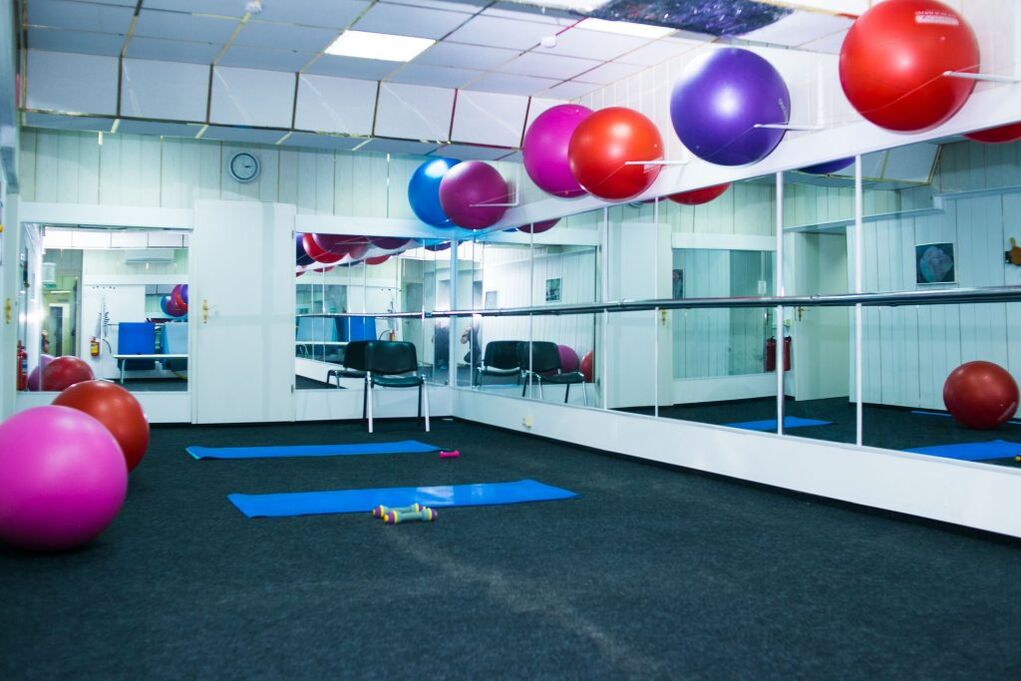
In the future, patients can practice exercise therapy independently at home.At the same time, it is important to approach this with full responsibility, perform exercises slowly, without hurry and in comfortable conditions.But if the pain occurs at any time during training, you should stop performing the exercise that provoked his appearance and consult your doctor to determine the causes and correct the osteochondrosis therapy program.
When doing exercise therapy, it is forbidden to make unexpected, strong movements, rotate your head or perform exercises through pain.In such situations, there is a high risk of existing existing changes in discs rather than receiving the expected benefit.
Swimming has a very positive effect on the state of the spine.This is exactly the type of sport that does not include stress on the discs, but actively involves the back and neck muscles.As a result, muscle corset is effectively strengthened, acting as a natural support for the spine.Therefore, if possible, patients are advised to visit the pool 2-3 times a week.
Manual therapy for cervical osteochondrosis
Manual therapy is one of the most effective methods of treating cervical osteochondrosis, as it allows you to affect not only the soft muscles and tissues but also the spine itself.But it is very important to take a responsible approach to choose a chiropractor, as incorrect or very strong impact can lead to a deterioration of the patient's condition and even developing complications.Such a specialist should not only have a higher medical education and a license to practice manual therapy, but also have a good understanding of anatomy and osteochondrosis traits, and have enough experience.
Do not confuse manual therapy and therapeutic massage.The differences between these types of manual therapy are important, as therapeutic massage includes only soft tissue, while during manual therapy the doctor also works on the back.
So each manual therapy session begins with a stroke, which allows you to prepare the skin for more active effects.In the future, friction, cooking and squeezing techniques are used, which allows you to activate blood flow to the collar area, neck and upper back.Once the skin and muscles warm enough and the patient is smooth, the doctor begins to perform mobilization and manipulation techniques.They mean the implementation of oscillating curves, pushes in the direction of more pronounced restriction of movement, which leads to increased spine mobility and the elimination of functional blocks.
Thus, thanks to qualified manual therapy, it is possible to:
- Normalize the position of the vertebrae, thus eliminating added pressure on the intervertebral discs and creating favorable conditions for their restoration;
- eliminate the pain caused by cervical osteochondrosis and its complications;
- Bring extremely smooth muscle to normal tone and relax the spasmodic muscles;
- Increased neck mobility;
- eliminate pressure in the vertebral arteries and thus normalize the blood flow to the brain;
- Eliminate the compression of the spinal roots and thus normalize the transmission of bioelectric impulses to those organs for which they are responsible as well as reduce pain.
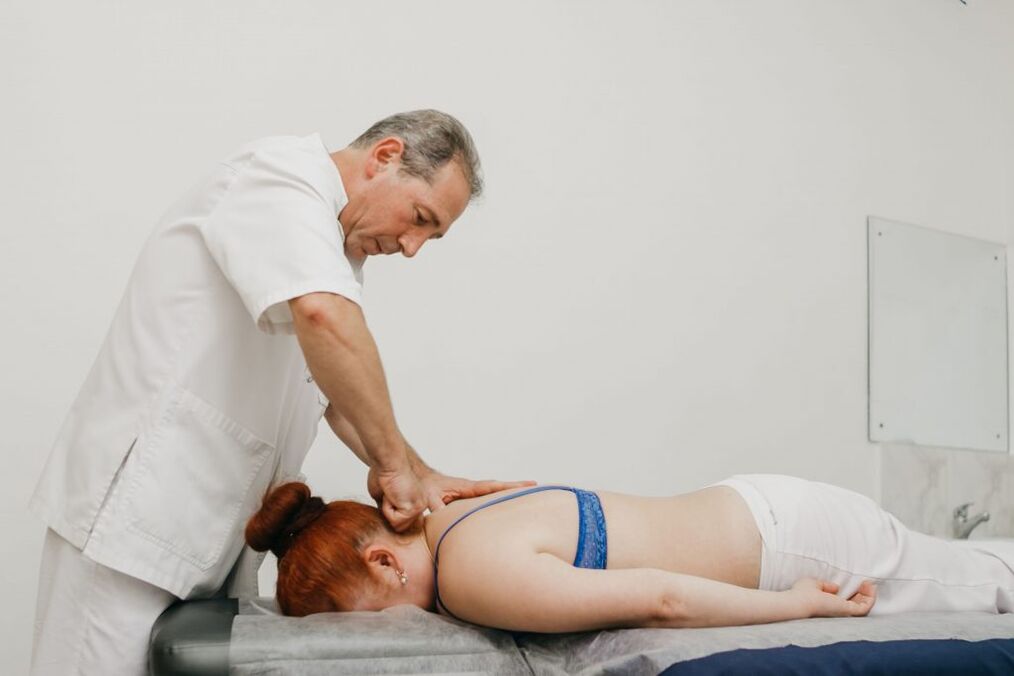
It is especially worth noting the author's method of manual therapy.It involves the use of special, patented impact techniques, which make it possible to obtain a pronounced result after the first session, not only by the neck affected by osteochondrosis, but also throughout the body.As a result, not only the pain and other symptoms of the disease disappear, but also the functioning of all organs improves, and the immune system is strengthened.The second and subsequent sessions increase the positive effect and consolidate it, which guarantees that if other medical recommendations are followed, the prayer period will last as long as possible.
Self-massage
To improve their well-being, patients can periodically perform neck self-massage to relieve the feeling of fatigue and reduce pain.To do this, sit in a comfortable position and try to relax the neck muscles.Then perform the shock movements with the palms, gradually moving to the circular friction, grasping the shoulder area.All movements are performed by the spine without sudden and strong pressure.In this case, you can use local anti-inflammatory medicines recommended by your doctor.
Physiotherapeutic treatment
Physiotherapy is indicated outside the acute inflammatory process.This allows you to consolidate the achieved treatment results and further improve the patient's condition.As a rule, a course of 10-15 procedures is determined, selected separately for each patient.May be:
- Electrophoresis - involves the use of electric current to ensure deeper penetration of the medication indicated.
- Magnetotherapy - helps activate blood circulation in the area of impact and stimulates the flow of metabolic processes.Moreover, magnetic therapy sessions have an analgesic effect and help eliminate swelling.
- Laser therapy has an anti-inflammatory, vasodilating effect, which leads to a decrease in the severity of the pain.
- Ultrasound therapy is a method of physiotherapy based on the positive effect of ultrasonic waves on the body.They help reduce the sensitivity of nerve endings and also have an anti-inflammatory and analgesic effect.
- Dadyamic currents - procedures lead to a decrease in pain, improve tissue nutrition, have a positive effect on the muscles and help eliminate inflammation.
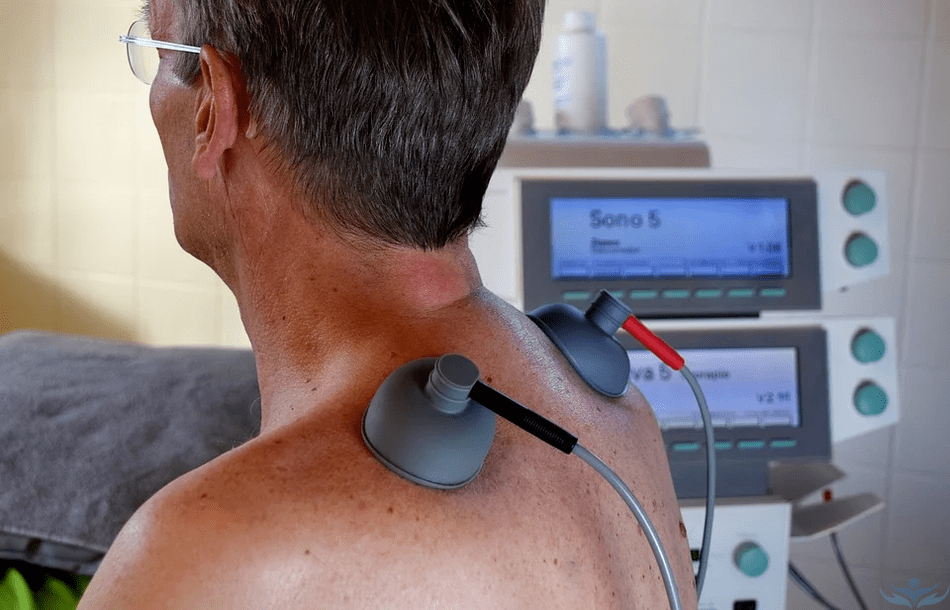
Attractive therapy
When the vertebrae joins due to the flattening of the intervertebral discs, attractive therapy is indicated using a glisson loop.The essence of the method is to apply an attractive load precisely arranged on the cervical spine using a special device that adjusts the head and has a load on the opposite side.Such procedures help to increase the distance between the vertebrae, which leads to a decrease in pressure on the discs and creates favorable conditions for their healing.But such therapy can only be prescribed by a doctor.
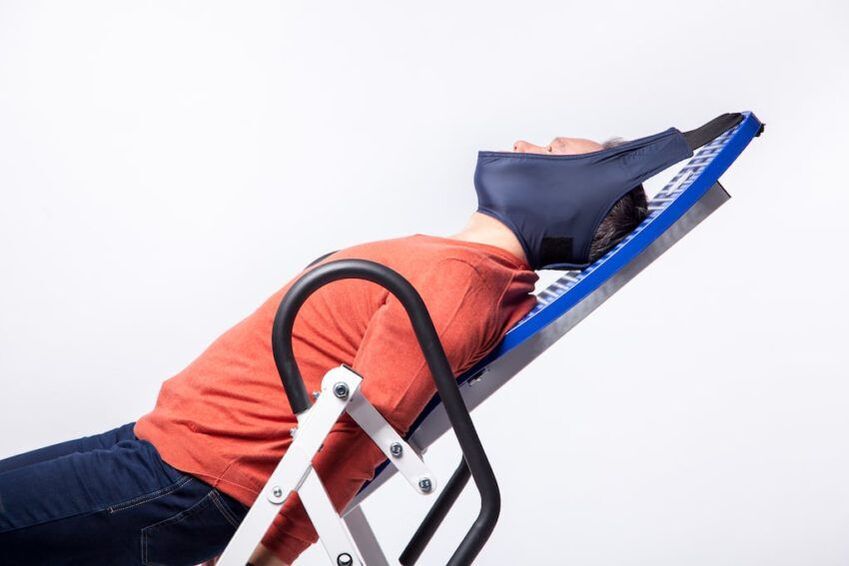
Needle
The iplicator is a simple, affordable reflexology tool in the neck area.This can be a rivet plate that should be placed under the neck, or a similar device, but in the form of a roller.Thanks to the sensitivity of thorns, skin receptors are irritated, which leads to the most active blood flow to the affected area.
Some patients mark a decrease in neck pain after the applicant's use, as well as an increase in performance, improve sleep quality and restoration of neck mobility.But if you have skin lesions in the affected area or vascular disease, you should not use a needle applicant.
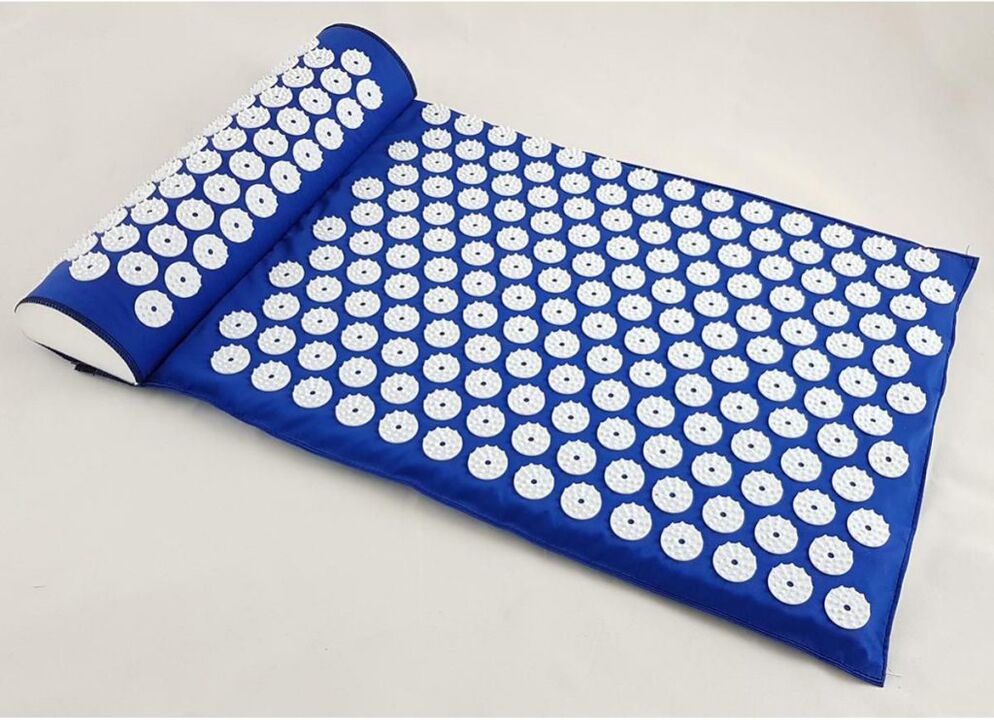
Orthopedic
To reduce the load on the cervical spine, it is recommended to change the mattress and pillow to orthopedic ones, as sleeping on an unpleasant pillow causes additional compression of vertebral arteries and nerve drawers during sleep.Orthopedic products are without this obstacle and ensure the maintenance of the physiologically accurate position of the spine along the entire length and thereby reduce the existing osteochondrosis rate.
But it is important to choose the right pillow and mattress in order to match the individual characteristics of the patient and contain suitable fillings.Thanks to them, it will also be possible to improve the quality of sleep and wake up in a cheerful and resting morning.
Also, some patients are recommended to wear a shants collar.It is a removable orthopedic device that allows you to adjust your neck and significantly reduce the load on the cervical spine, for example, when working on a computer or after you have suffered an injury.The collar is placed before the expected load on the neck, but should be removed during sleep and rest.They vary in design, height, fixing scale, so only the attending doctor can choose the optimal one.
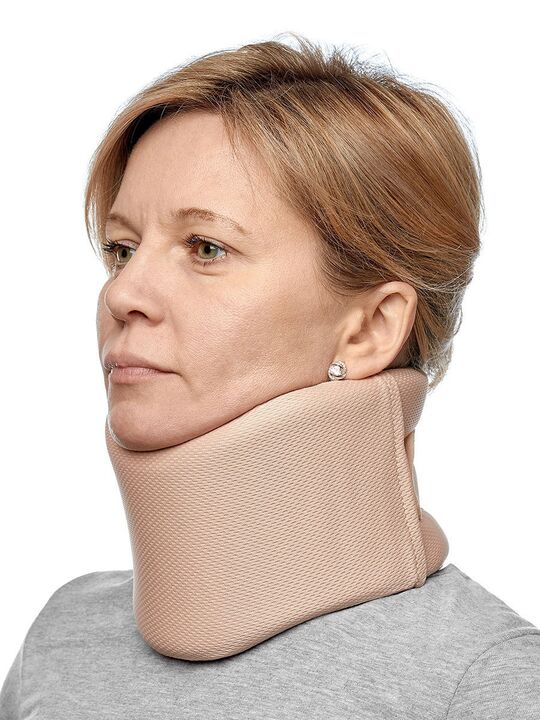
Thus, the treatment of cervical osteochondrosis can be quite long and complex.You need to be prepared for this, because there is no other way to stop developing changes in the intervertebral discs, avoid developing complications and the need for surgery.But in most cases, patients' condition improves within the first weeks of treatment.At the same time, it is important not to self-medicate, but to contact a neurologist, as only a qualified specialist will be able to determine the degree of osteochondrosis and choose the most appropriate treatment for the disease for a particular patient.

















































